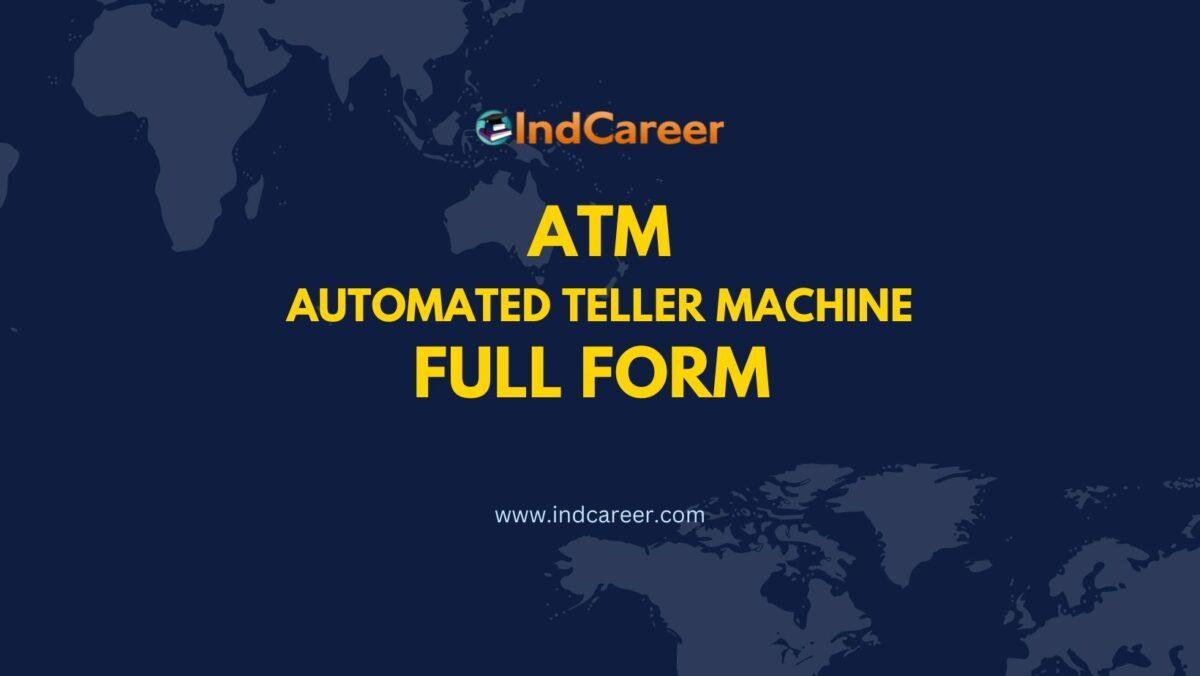Contents
In today’s fast-paced world, convenience is a crucial aspect of our daily lives. One of the most remarkable innovations in banking that has revolutionized the way we handle cash is the ATM, an abbreviation that we use without even thinking about it. In this article, we’ll delve into the full form of ATM and explore its history, functionality, benefits, drawbacks, security measures, and the future it holds.
What is ATM?
ATM stands for “Automated Teller Machine.” It is a self-service device provided by banks and financial institutions that enables customers to perform various banking transactions without the need for human intervention. These transactions include cash withdrawals, balance inquiries, fund transfers, bill payments, and more.
The History of ATMs
The concept of ATMs dates back to the 1960s. The first ATM was introduced in 1967 by Barclays Bank in London, UK. These early ATMs required the use of special paper vouchers instead of plastic cards, which made them less user-friendly. However, they laid the foundation for the modern ATM network we rely on today.
How ATMs Work
ATMs work through a combination of hardware and software. The machine is equipped with a card reader that reads the information stored on your ATM card’s magnetic strip or chip. After inserting the card and providing the necessary authentication, the ATM connects to the bank’s network to verify the user’s identity and account details. Once authenticated, customers can perform various transactions through the ATM’s interface.
Advantages of ATMs
ATMs offer several advantages that have made them an integral part of our lives. Some of the key benefits include:
- 24/7 Availability: ATMs are available round the clock, allowing customers to access cash and perform transactions at their convenience.
- Convenience: With ATMs widely distributed, customers can access their funds and banking services without visiting a physical bank branch.
- Speedy Transactions: ATMs facilitate quick transactions, reducing the time spent in queues at the bank.
- Multiple Services: ATMs offer a range of services, such as cash withdrawals, deposits, and balance inquiries, making banking more accessible.
Disadvantages of ATMs
Despite their numerous advantages, ATMs also have some drawbacks, including:
- Fees: Some banks and ATM operators charge fees for using ATMs, especially if the user is from a different bank.
- Security Concerns: ATMs can be susceptible to fraud and skimming activities, posing risks to customers’ financial information.
- Technical Issues: Like any electronic device, ATMs can experience technical glitches, leading to transaction failures.
ATM Security Measures
Banks implement various security measures to protect users and their transactions at ATMs. These include:
- PIN (Personal Identification Number): Users must enter a unique PIN to access their accounts, adding an extra layer of security.
- EMV Technology: Many ATMs now use EMV chip technology, which enhances card security and reduces the risk of skimming.
- Surveillance Cameras: ATMs are equipped with cameras to monitor activities and discourage potential criminals.
ATM vs. Cashiers
The advent of ATMs has raised questions about the future of traditional cashiers in banks. While ATMs provide convenience, human cashiers offer personalized assistance and a human touch that some customers prefer.
Future of ATMs
The future of ATMs looks promising. Advancements in technology, such as biometric authentication and contactless transactions, are making ATMs even more secure and user-friendly. ATMs are likely to remain an essential part of banking, evolving with the changing needs of customers.
Conclusion
In conclusion, ATM, short for “Automated Teller Machine,” has become an indispensable part of our lives, providing us with 24/7 access to banking services. Despite the rise of digital banking, ATMs continue to play a vital role in making cash accessible and facilitating various transactions. With continuous improvements in technology, the future of ATMs is brighter than ever.
FAQs
Yes, you can use other bank’s ATMs, but some banks may charge a fee for this service.
Make sure to keep your PIN confidential, avoid using suspicious ATMs, and regularly check your account statements for any unauthorized transactions.
No, most ATMs only dispense banknotes, not coins.
Many ATMs are designed to be accessible to people with disabilities, providing features like audio assistance and tactile keypads.
Contact your bank immediately to report the incident and get assistance in retrieving your card.
